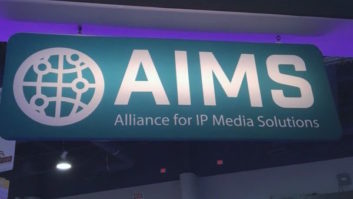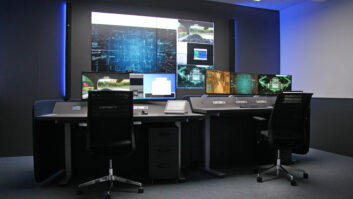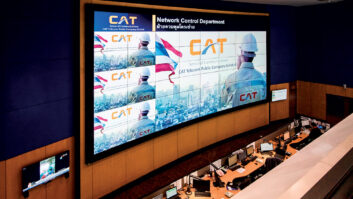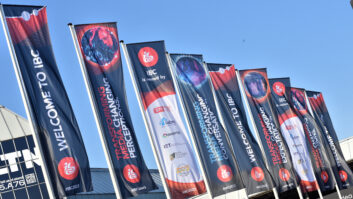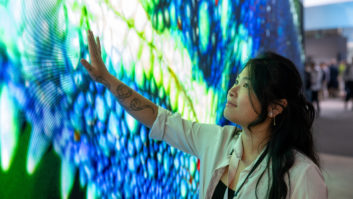In the wake of multiple high-profile AV and media standards efforts in recent years, it might be easy for the casual observer to think that a lot of the most important IP boxes have been well and truly ticked. Indeed, it is true that in terms of transport and synchronisation of video, audio and ancillary data, major initiatives such as SMPTE ST 2110 have seen the industry’s adoption of IP take huge steps forward.
But as tends to be the case in networking, it’s not yet a case of ‘job done’. In particular, ST 2110 does not solve the discovery or connection of devices that send and receive these streams – meaning there is a threat to interoperability if multiple proprietary approaches continue to proliferate. For a precedent we can look to the audio world, where the advent of the original AES67 standard in 2013 marked a welcome response to a fast-emerging issue regarding the interoperability of different IP audio transportation technologies.
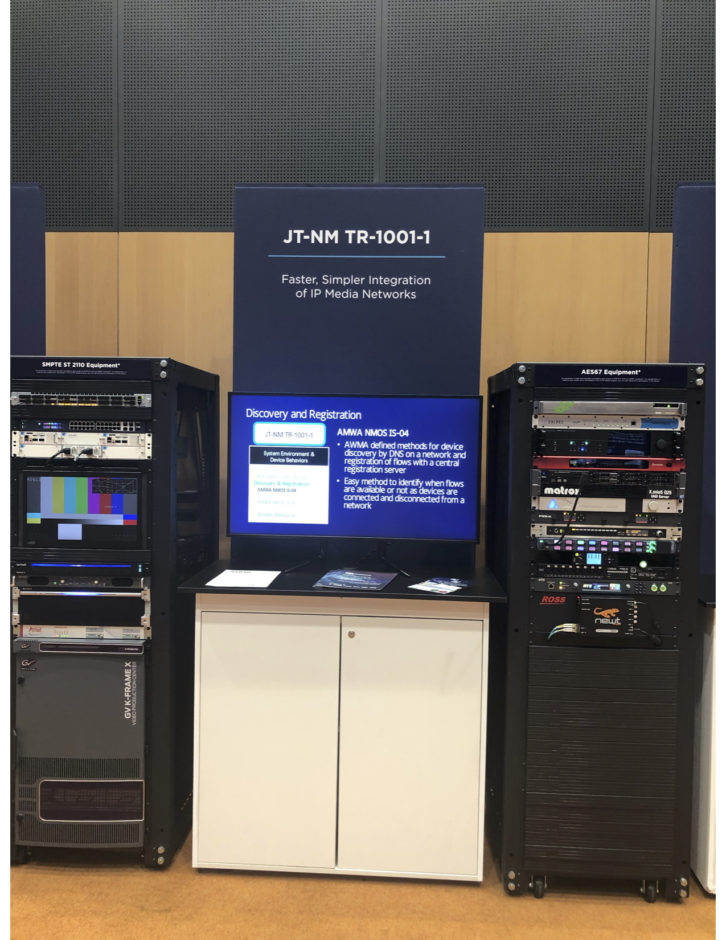
With the use of IP growing all the time in ‘conventional’ media and pro AV/install applications, the need for simple and effective connectivity and control has become increasingly acute. Hence the development of the NMOS (Networked Media Open Specifications) by the Advanced Media Workflow Association (AMWA). Designed to support the industry’s transition to a “fully networked” architecture, the NMOS specifications provide an interoperable approach to discovering, connecting and managing network resources.
But before delving any further, it’s important to note the distinction made by the association between a ‘standard’ and a ‘specification’. Unlike some other efforts where a specific challenge can be addressed and its solution “locked down”, the task faced by the NMOS teams is “more fluid” and therefore more open-ended.
Neil Dunstan, director membership and marketing at AMWA, remarks: “It’s a job which exists as long as end-users identify more requirements that NMOS can solve – hence why we use the term specification as opposed to standard.”
STEADY DEMAND
All of this is reflected in a list of technical specs that is now advanced, but which continues to be refined in line with “steady demand from users to provide valuable new functionality”. Out of 13 developments, 9 are ‘published’ or ‘published & stable’, including: IS-04 Discovery & Registration, which provides a uniform mechanism for new connected media devices to join into a running system; IS-05 Device Connection Management, which offers a uniform mechanism for connected media devices (especially ST-2110 devices) to integrate with controllers for stream connection; IS-07 Event & Tally, for carrying time-sensitive information; IS-08 Audio Channel Mapping, for controllers to query and manage mapping of audio channels between the internal parts of a device; IS-09 System Parameters, for discovery of key parameters such as PTP domain; BCP-003 and IS-10 for NMOS security and authorisation, respectively; and NMOS testing tools for automated testing of NMOS/registry test suites and NMOS controller test suites.
In addition, there are three other specs that are considered ‘works in progress’: IS-11 for compatibility measurement; MS-05 NMOS Control Architecture, which will provide a mechanism for devices to expose a structured combination of public and private control, status and monitoring APIs; and BCP-006 NMOS Stream Mappings, intended to enable controllers to manage ST 2110-22 JPEG-XS streams alongside uncompressed ST 2110-20 to manage ST 2110-22 JPEG-XS streams alongside uncompressed (ST 2110-20) streams within the NMOS system.
PLATFORM STRATEGIST
Ethan Wetzell is platform strategist at AMWA member Bosch Communications Systems and a well-known figure in media networking circles for several decades through his involvement with AMWA and other associations including the AIMS, OCA Alliance and Avnu Alliance. Of the AMWA specifications, he remarks: “Things are moving well with core elements such as IS-04 and IS-5 being stable and used in the industry, while others have been published or are in the planning stages. This reflects the nature of these kinds of technologies and how they keep pace with both the application domain and the development of other technologies that they support, complement, or interact with. As such, this is a developing and evolving landscape of technologies, as it should be.”
Underlining this point, one of the developments currently incubating is set to support the use of the NDI video-over-IP technology, which has seen a steady rise in adoption during the past couple of years. The aim of the intended ‘Using NMOS with NDI transport’ project – for which a timeframe is now in discussion – will be to allow NMOS controllers to register NDI devices and manage NDI streams alongside other types such as ST 2110 uncompressed and ST 2110 JPEG-XS streams within an NMOS system.
Dunstan highlights another, earlier example of AMWA responding to a specific requirement on the part of end-users. “IS-07 for Event & Tally was developed when the needs of end-users were identified to control ‘on air’ lights for a studio camera, or to change the camera operator’s name on a monitor’s UMD,” he says. “Neither of those have anything to do with ST 2110, but they still exist as a need for an end-user.”
MEDIA SUPPORT
As might be expected given the Association’s approach, AMWA does not actually certify products for compliance with the specifications. However, the separate Joint Taskforce on Networked Media programme JT-NM Tested does cover IS-04 and IS-05 support for media devices within its TR-1001 testing, and maintains a catalogue of tested products. This is expected to be extended soon to include testing of IS-08 as well as of registries and clients. (For information on JT-NM’s plans for its Tested Program at IBC 2022, please visit https://www.jt-nm.org/jt-nm-tested.)
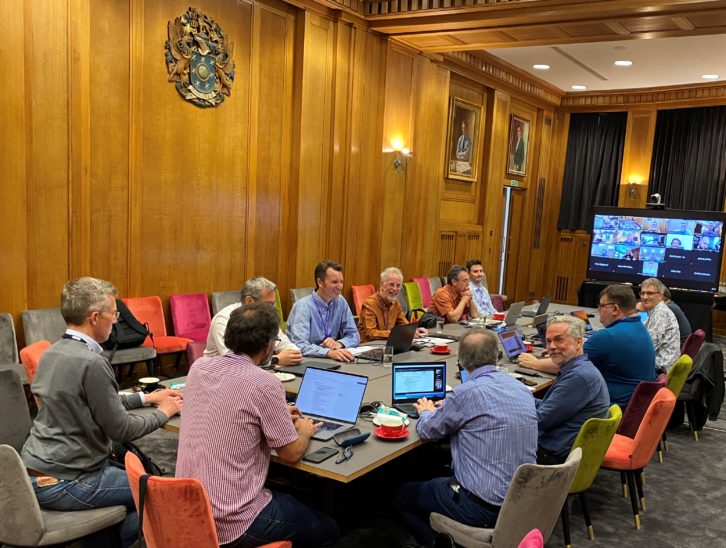
Meanwhile, the membership of the organisation continues to grow and now includes many world-leading technology providers and content creators. Among its Principal Members are Arista, Avid, BBC, Imagine Communications and Sony, while General Members include Bosch, Channel 4, Cisco, NEC and Riedel Communications. Naturally, the aim is to attract more participants, although it will be specific end-user requirements that continue to determine and drive the activities of the NMOS working groups.
“We do engage a great deal with end-users; after all, it’s through determining the issues that need to be addressed that the suppliers are able [to undertake useful developments] because they recognise the organisations involved and are aware that they know what they are talking about,” says Dunstan. “Ultimately, it’s the dynamic between the end-user and the supplier that can make 1+1 equal more than 2.”
IBC RETURN
AMWA members are currently preparing for the return of the in-person IBC Show after a three-year break due to the pandemic. While specific plans for the event were not available at the time of writing, AMWA has previously collaborated on collaborative IP-related showcase projects with other organisations such as AIMS, Avnu Alliance and the OCA Alliance. As this might indicate, broadcast has so far been the most enthusiastic adopter of NMOS, but there are plenty of indications that it will grow more in pro-AV and install in the years ahead.
Providing a general update on the state of play in terms of sector and application deployment of NMOS, Wetzell comments: “NMOS has been predominantly used in the broadcast space, although its use in applications such as intercoms and its relationship to technologies such as ST 2110 and, by extension AES67, position it to move into pro-AV spaces as those needs come up.”
He also points to the potential impact in multiple environments of IPMX (Internet Protocol Media Experience), which is a proposed set of open standards and specifications enabling – in the words of its website – “the carriage of compressed and uncompressed video, audio and data over IP networks for the pro AV market.”
Notes Wetzell: “IPMX, of course, is one set of technologies that can move the needle there as that becomes adopted. [Regarding NMOS] I think that wider adoption in pro-AV spaces will trail broadcast as the application domains, technologies and problem statements are a bit different. However, that does not mean it will not happen – just that the pace will be a bit different than in broadcast.”
Indeed, variable adoption will surely become even more prevalent across sectors as the number, diversity and potential complexity of new applications and needs grows more intense. “Adoption of technologies like these can move at different spaces in different spaces,” advises Wetzell. “But from the perspective of realising the objective of helping to move the industry towards IP solutions, this is being met.”
